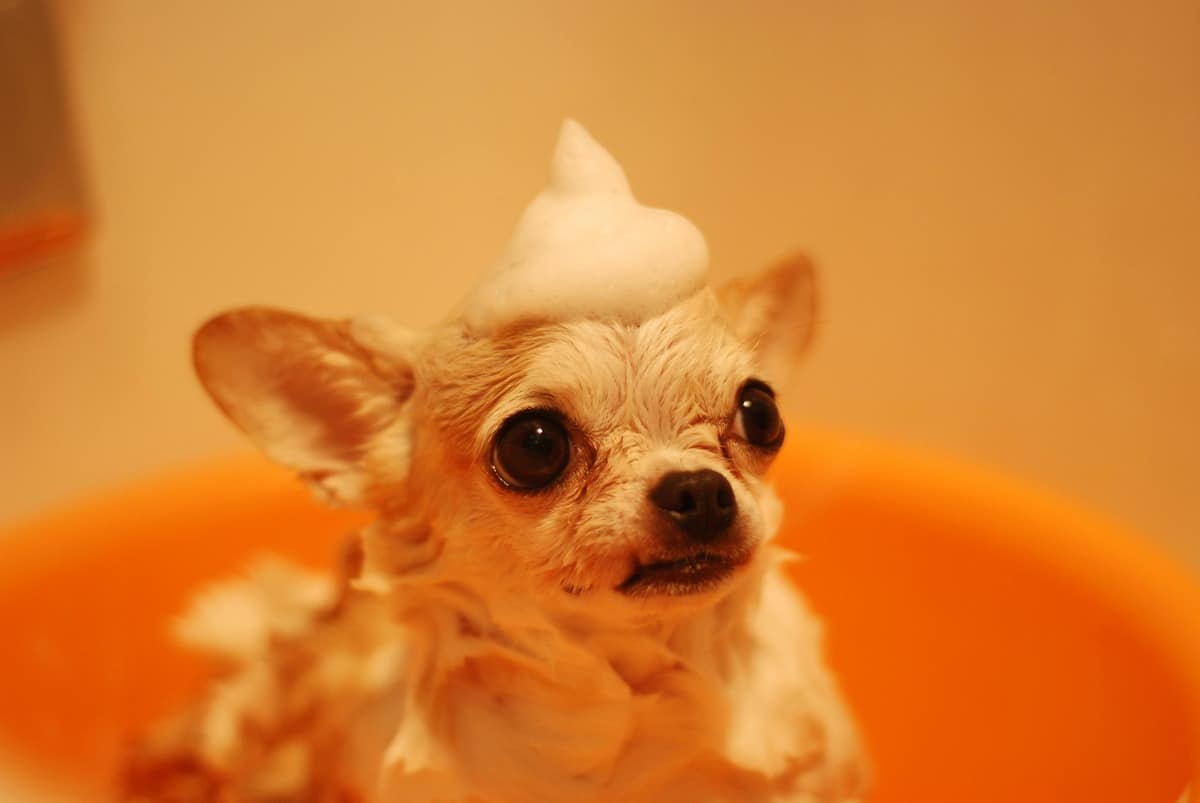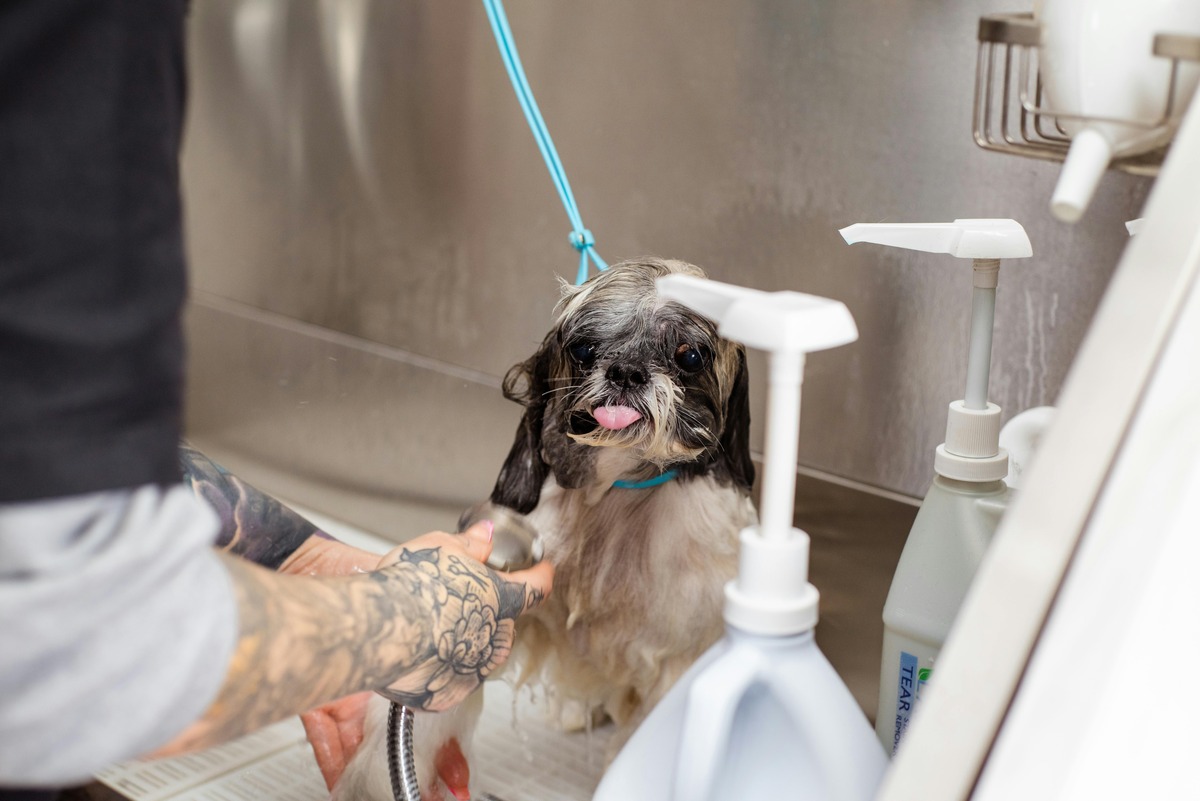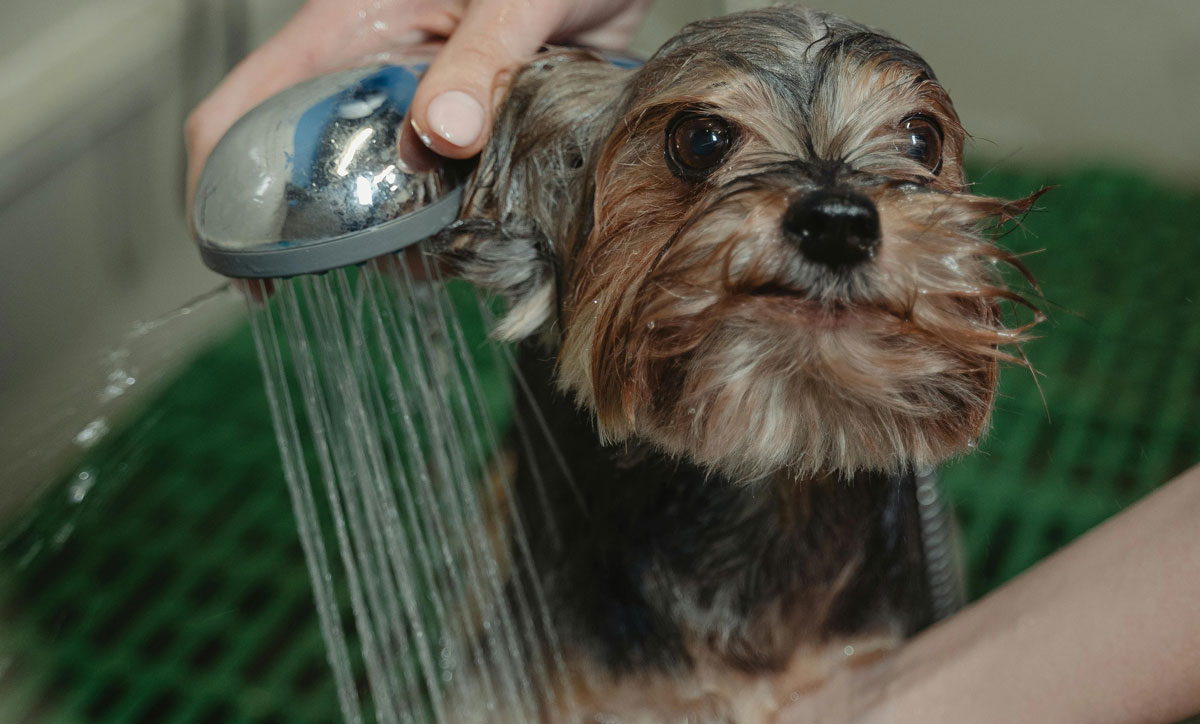
How to Bathe Your Dog at Home Without Stress
Bathing your dog at home can be a daunting task. It is especially difficult if your furry friend doesn’t like water or gets anxious during the process. Regular baths are key for a healthy coat. They help prevent skin problems and remove odours. Bathing your dog can be easy. Know how often to bathe, pick the right shampoo, and follow stress-free tips. These dog bathing tips will help both you and your pup enjoy the experience.
In this comprehensive guide, we’ll cover everything you need to know about giving your dog a bath at home without stress. You will learn about preparation, post-bath care. This is to ensure a positive experience for both you and your pet.
Pro Tip: To make bath time easier, tire your dog out with a walk or play session before bathing. A relaxed dog is less likely to resist or panic.
Quick Guide:
- Choose the Right Shampoo – Opt for a pet-friendly shampoo based on your dog’s coat type and skin sensitivity.
- Prepare the Bathing Area – Use a non-slip mat, lukewarm water, and keep supplies within reach.
- Brush Before Bathing – Prevent matting and remove loose fur.
- Use Gentle Water Pressure – Start from the neck down to keep water out of the ears.
- Rinse Thoroughly – Leftover shampoo can cause skin irritation.
- Dry Completely – Use a towel or a pet-safe blow dryer on low heat.
- Reward Your Dog – Treats and praise make future baths stress-free.
Important Tip: Never use human shampoo on your dog—it disrupts their skin pH and may cause irritation. Stick to vet-approved pet shampoos for the best results.
Why Regular Baths Are Important for Your Dog

Promotes Skin and Coat Health
Bathing removes dirt, allergens, and excess oils from your dog’s coat. This keeps their skin healthy and reduces irritation. A well-maintained coat also prevents flaky skin and keeps your dog’s fur shiny and soft.
Controls Shedding and Dander
A proper bath helps remove loose fur and dander. It makes it easier to manage shedding and keeping your home cleaner. This is especially important for households with allergy sufferers.
Prevents Infections and Parasites
A good dog shampoo can help stop bacterial infections, fungal problems, and fleas or ticks. Cleaning your dog regularly keeps pests away. This helps prevent discomfort and stops the spread of diseases.
Eliminates Odours
Dogs can develop a strong odour due to natural oils, dirt, and bacteria accumulating on their fur. A proper bath helps eliminate bad smells and keeps your pet fresh.
How Often to Bathe a Dog?
Factors That Influence Bathing Frequency
- Breed and coat type: Short-haired dogs require less frequent baths than long-haired breeds.
- Activity level: Dogs that spend a lot of time outdoors or playing in the mud need more frequent baths.
- Skin conditions: Dogs with allergies or sensitive skin may need medicated baths prescribed by a vet.
- Climate: In humid climates, dogs may need more frequent baths to prevent fungal infections. In dry climates, too many baths can lead to skin irritation.
General Bathing Guidelines
- Short-haired dogs: Once every 6-8 weeks.
- Medium-haired dogs: Every 4-6 weeks.
- Long-haired dogs: Every 3-4 weeks.
- Dogs with skin conditions: As recommended by your vet.
Choosing the Best Shampoo for Your Dog

Factors to Consider
- Skin sensitivity: Opt for hypoallergenic shampoos if your dog has sensitive skin.
- Coat type: Moisturising shampoos work best for dry coats while deodorising shampoos help with odour control.
- Ingredients: Look for natural ingredients like oatmeal, aloe vera, and coconut oil. Avoid artificial fragrances, sulfates, and parabens.
Recommended Dog Shampoos
- For sensitive skin: Earthbath Oatmeal & Aloe Dog Shampoo
- For odour control: Wahl Odour Control Shampoo
- For flea and tick prevention: Adams Plus Flea & Tick Shampoo
- For deep cleaning: TropiClean Deep Cleaning Dog Shampoo
- For whitening coats: Vet’s Best Whitening Shampoo
Step-by-Step Guide to Stress-Free Dog Bathing
1. Prepare the Bathing Area
- Choose a comfortable location (bathtub, sink, or outdoor area).
- Use a non-slip mat to prevent slipping.
- Have all supplies ready: shampoo, conditioner, towels, and a cup for rinsing.
- Keep a towel nearby to dry your pet immediately after the bath.
2. Brush Your Dog Before Bathing
- Remove tangles and loose fur to prevent matting.
- Use a de-shedding tool for heavy shedders.
- Check for fleas, ticks, or skin irritations before proceeding with the bath.
3. Use Lukewarm Water
- Avoid hot or cold water as extreme temperatures can stress your dog.
- Test the water temperature before wetting your dog’s coat.
- Ensure water pressure is gentle to avoid scaring your pet.
4. Gently Wet Your Dog’s Coat
- Start from the neck down to avoid water getting into the ears.
- Use a cup or handheld sprayer for controlled water flow.
- Wet the coat thoroughly to ensure even shampoo distribution.
5. Apply Shampoo and Massage Gently
- Work the shampoo into a lather, massaging it into the fur.
- Avoid contact with the eyes and ears.
- Let the shampoo sit for a few minutes before rinsing.
6. Rinse Thoroughly
- Ensure no shampoo residue is left as it can cause skin irritation.
- Rinse multiple times to remove all soap.
- Use your fingers to run through the fur and check for any remaining residue.
7. Conditioning (Optional)
- If your dog has a dry coat, use a dog-friendly conditioner.
- Apply conditioner, let it sit for a minute, and rinse thoroughly.
8. Dry Your Dog Properly
- Use a towel to remove excess water.
- If your dog tolerates it, use a pet-friendly blow dryer on a low setting.
- Allow your dog to air dry in a warm, draft-free space.
- Brush your dog again after drying to remove any remaining loose fur.
9. Reward Your Dog
- Give treats and praise to associate bath time with positive experiences.
- Play with your dog after the bath to reinforce a happy mood.
Additional Tips for a Stress-Free Bath
Create a Calming Environment
- Play soft music to keep your dog relaxed.
- Keep a calm and reassuring tone throughout the bath.
- Use lavender or chamomile-based products to promote relaxation.
Use a Distraction
- Offer a lick mat with peanut butter to keep your dog occupied.
- Have a toy nearby to make bath time fun.
- Bathe your dog when they are tired after a long walk or play session.
Be Patient and Gentle
- Take breaks if your dog seems overwhelmed.
- Avoid sudden movements that may startle your pet.
- Speak softly and offer words of encouragement.
Common Mistakes to Avoid
- Using human shampoo: It disrupts your dog’s skin pH balance and can cause irritation.
- Bathing too often: Overbathing can lead to dry skin and irritation.
- Rushing the process: A slow, gentle approach helps keep your dog calm.
- Not rinsing properly: Leftover shampoo can cause skin irritation and itching.
- Skipping ear protection: Water inside the ears can lead to infections.
FAQs
1. How often should I bathe my dog?
The frequency depends on your dog’s breed, coat type, and lifestyle. Short-haired dogs may need a bath every 6-8 weeks, while long-haired breeds may require one every 3-4 weeks. Dogs with skin conditions should follow their vet’s recommendations.
2. Can I use human shampoo on my dog?
No, human shampoo can disrupt a dog’s skin pH balance and cause irritation. Always use a dog-specific shampoo formulated for their skin and coat needs.
3. What should I do if my dog is afraid of baths?
Create a calming environment with soft music and a reassuring tone. Use lukewarm water, offer treats, and take breaks if needed. Distractions like a lick mat with peanut butter can also help.
4. Should I brush my dog before or after bathing?
Brushing before bathing helps remove tangles and loose fur, preventing matting. Brushing after the bath helps keep the coat smooth and reduces shedding.
5. How do I dry my dog after a bath?
Use a towel to remove excess water, followed by a pet-friendly blow dryer on a low setting if your dog tolerates it. Let them air dry in a warm, draft-free space and brush their coat once dry.
Bathing Your Dog With Ease
Bathing your dog at home doesn’t have to be a stressful experience. You should prepare in advance, get the best shampoo for pets, and follow up with a calm, step-by-step approach. This way, you can make bath time an enjoyable routine. Regular baths keep your dog’s coat healthy, fresh, and free of parasites. It also strengthens the bond between you and your pet.
With the right techniques, patience, and some creativity, you can make bath time fun for your dog. Soon, your dog will start to enjoy it! Grab your supplies, stay patient, and make bath time fun for your furry friend!